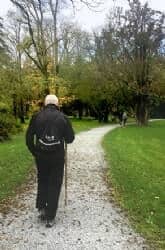Falling Happens to Other People, Not Me

Many people think falls are a normal part of aging. The truth is, they’re not. Most falls can be prevented — and you have the power to reduce your risk and the risk of loved ones. Exercising, managing medications, checking for vision problems, and making the living environment safer are all steps you can take to prevent falls.
Here are five common myths — and the reality — about older adult falls:
Myth 1: Falling happens to other people, not to me.
Reality: Many people think, “It won’t happen to me,” but the truth is that one in three older adults — about 12 million — fall every year in the U.S.
Myth 2: Falling is something normal that happens as you get older.
Reality: Falling is not a normal part of aging. Strength and balance exercises, managing your medications, having your vision checked, and making your living environment safer are all steps you can take to prevent a fall.
Myth 3: If I limit my activity, I won’t fall.
Reality: Some people believe that the best way to prevent falls is to stay at home and limit activity. Not true. Performing physical activities will actually help you stay independent, as your strength and range of motion benefit from remaining active. Social activities are also good for your overall health.
Myth 4: As long as I stay at home, I can avoid falling.
Reality: Over half of all falls take place at home. Inspect your home for fall risks. Fix simple but serious hazards such as clutter, throw rugs, and poor lighting. Make simple home modifications, such as adding grab bars in the bathroom, a second handrail on stairs, and non-slip paint on outdoor steps.
Myth 5: Muscle strength and flexibility can’t be regained.
Reality: While we do lose muscle as we age, exercise can partially restore strength and flexibility. It’s never too late to start an exercise program. Even if you’ve been a “couch potato” your whole life, becoming active now will benefit you in many ways — including protection from falls.
Source: www.ncoa.org



